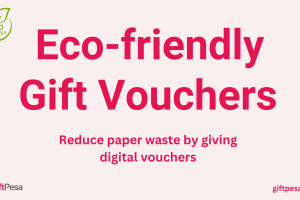It is common to see birthday cards and service awards when thinking of ‘employee recognition.’ That’s because, traditionally, workplace recognition comes from the top down. But peer-to-peer recognition is a game-changing secret vital to employee engagement.
Peer-to-peer recognition encourages employees to praise and acknowledge any outstanding work. Employee recognition is important in collaborative arrangements but necessary for employee teamwork.
A peer-to-peer recognition program is beneficial to employees. It additionally has a positive impact on the company. In addition, there are multiple ways for team members to recognize each other.
The information below details everything HR professionals and employees need to know about employee recognition programs.
Importance of Peer-To-Peer Recognition
- Strengthening work relationships. Peer recognition programs are a way for coworkers to bond. It can therefore strengthen employee relationships.
- Improve employee self-confidence. Employees that receive positive feedback from their peers develop better self-esteem and confidence. It can also lead to better team spirit and thus enthusiasm to keep collaborating.
- Make collaborations effective. Team members that show appreciation for each find it easier to work together, resulting in effective collaboration. In addition, they will be more inclined to collaborate when the opportunity presents itself.
- For workplace culture. One good deed can have a ripple effect. Soon enough, peer recognition can become an integral characteristic of company culture.
What Are Some Ways To Show Recognition?
Cards And Handwritten Notes
Cards and handwritten notes ensure that every employee can participate in the program. Managers can set up ‘recognition stations,’ providing simple cards and fun stationery to encourage employees to participate.
Social Media And Channel Posts
Employees can use social media and shared messaging channels like Slack to acknowledge good employee performance. Social recognition initiatives benefit remote teams that cannot access a physical ‘kudos board.’
Managers can create message boards or social media pages where employees can publicly praise each other for work well done. Alternatively, HR can invite employees to share their praise anonymously and then post it on the page, channel, email newsletter, etc. LinkedIn endorsements are also effective.
Peer Point or Monetary Rewards System
The peer point or monetary rewards system is a great way to scale productivity while nurturing company values.
Each employee starts with an equal set of points or monetary value, such as 10 points or $10. Then, the employees anonymously reward each other within a set timeline, such as a month.
The high-performing employee with the most points at the end receives the monetary award or gets to pick a gift from management based on the points they receive.
Corporate Gifting Solution
Using corporate gifting solutions makes peer recognition programs easier and more effective. These platforms make sending gifts easier and more personal. An excellent example of a corporate gifting solution is Giftpesa. The solution allows employees to give their coworkers gift vouchers of specific monetary value.
How To Encourage Peer-To-Peer Recognition
Develop a recognition program.
HR managers should develop peer recognition programs and spread awareness among employees. They can make boards and stations that outline the program and participation rules. HR should ensure that everyone has access to the program. In addition, the program should be inclusive and timely, with a rewards program that accommodates personality differences.
Post publicly.
Managers should spotlight employees who receive positive peer feedback to inspire others, show them that their good work contributes to the business, and help leaders become more aware of the employee’s hard work.
Encourage leaders to lead by example.
HR should encourage team leaders to participate in the program as an example to others. Leaders should ensure it is genuine and simple.
Make it voluntary.
Once the culture of recognition becomes mandatory, employees will find it hard to do or give genuine feedback, thus defeating its purpose. HR leaders should insist on the voluntary nature of the program.
The Benefits of Recognizing Others
Some of the benefits of peer recognition are:
- Camaraderie. Employee appreciation can create mutual trust and friendship among employees– both important for collaborative success.
- Better mental health. Grateful and recognized employees are less stressed and anxious about going to work.
- Improves the bottom line. Employee recognition encourages employees to work harder and smarter, resulting in better productivity.
- Good employee retention rates. Peer-to-peer recognition can improve job satisfaction which translates to better retention rates.
Peer-To-Peer Recognition Affects The Workplace
Encouraging employees to recognize each other positively impacts the work environment. Once it is an established part of company culture, it becomes a competitive edge for attracting talent. Contact Workpay to learn more about Giftpesa, an effective peer-to-peer recognition solution.







